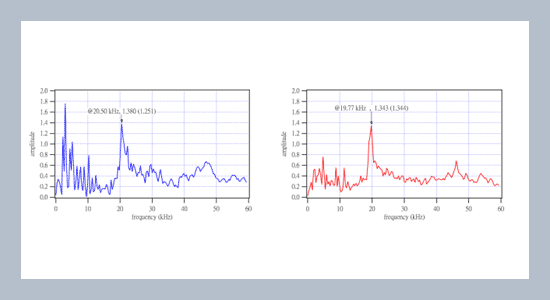Chih-Peng Yu* , Chia-Chi Cheng, and Jiunnren Lai Department of Construction Engineering,Chaoyang University of Technology, Wufeng 413, Taiwan (R.O.C.)
Download Citation:
|
Download PDF
In order to investigate the feasibility of deducing a simulated transfer function basedon the Rayleigh wave form in an Impact-Echo signal, the analytical solution for the normal surfacedisplacement due to a heaviside force at the half-space was reviewed and used to computethe surface displacement responses resulted from various types of impulse forces. Based on aseries of numerical studies on the characteristics of Rayleigh wave form in the surface displacementresponses, this paper presents the idea of using an equivalent impact force to derive an intentionallyscaled transfer function. The pseudo force can be obtained from using Rayleigh waveform as a pseudo force or by generating an equivalent half-sine impact force accordingly. Theeffect of using such pseudo and equivalent force functions was discussed in details. In the proposedmethod, the force amplitude was first estimated from an amplitude curve established fromnumerical simulations using half-sine force functions. The recovery of a simulated transfer functionwas next achieved via the use of an estimated force amplitude and a selected force function.The proposed procedure also results in steady thickness amplitudes when measurements on twoconcrete plates were taken for various impacts associated with different steel balls and differentimpact locations. The success in recovering constant thickness amplitudes for plate-like structuralmembers proved that the derivation of simulated transfer function is a useful tool in extendingthe Impact-Echo test. The quantitative evaluation of the interfacial property of the substratelayer will also benefit from this simulated transfer function.ABSTRACT
Keywords:
Impact-Echo, transfer function, Rayleigh wave form, normal response on a half-space
Share this article with your colleagues
[1] Pekeris, C. L. 1955. The Seismic SurfacePulse, National Academy of Science,U.S.A., 41: 629-638.REFERENCES
[2] Achenbach, J. D. 1973. “Wave propagationin elastic solids”, North-Holland,New York: 310-318.
[3] Graff, K. F. 1975. “Wave motion in elasticsolids, Dover, Oxford: 356-368.
[4] Wu, T. T., Fang, J. S., Liu, G. Y., andKuo, M. K. 1995. Determination of ElasticConstants of A Concrete SpecimenUsing Transient Elastic Waves, Journalof Acoustic Society of America, 98, 4:2142-2148.
[5] Cheng, C. C., Yu, C. P., and Chang, H. C.2004. On The Feasibility of DerivingTransfer Function from Rayleigh Wavein the Impact-Echo Displacement Waveform,Key Engineering Materials,270-273: 1484-1492.
ARTICLE INFORMATION
Accepted:
2006-07-28
Available Online:
2006-09-01
Yu, C.-P., Cheng, C.-C., Lai, J. 2006. Application of closed-form solution for normal surface displacements on impacted half space : quantification of Impact-Echo signals. International Journal of Applied Science and Engineering, 4, 127–150. https://doi.org/10.6703/IJASE.2006.4(2).127
Cite this article:






